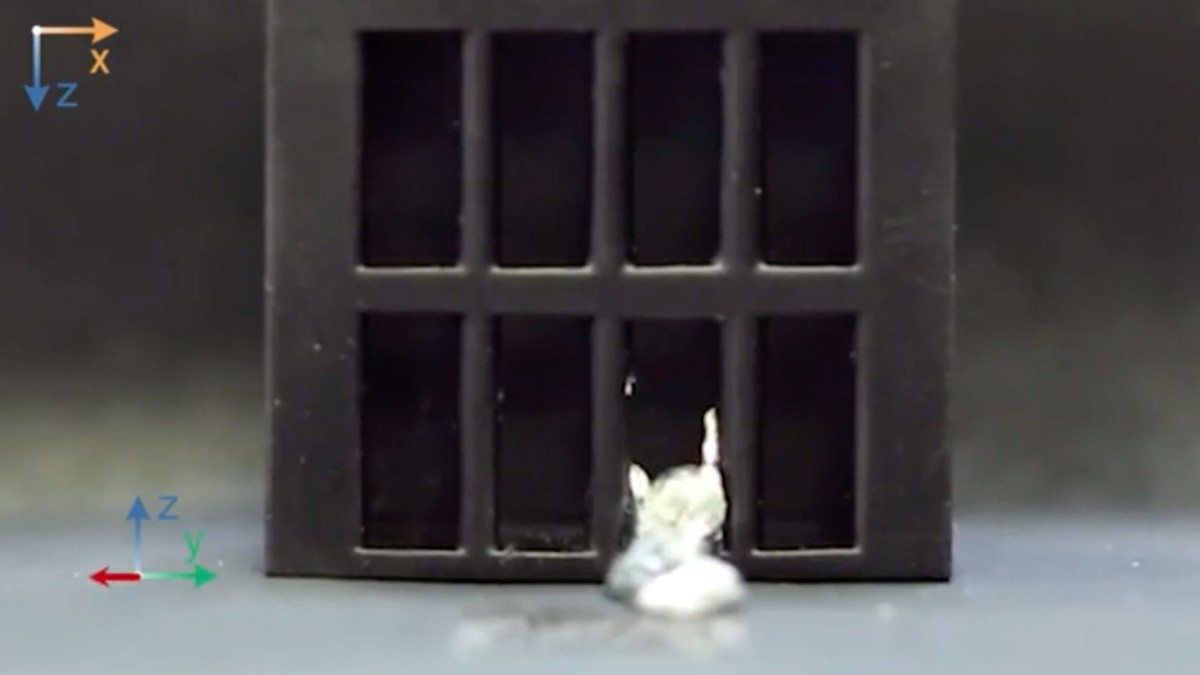Scientists have robots made that can transition from a solid to a liquid form, allowing them to do mind-boggling things like jump, climb, and even drip through the bars of a cage in a way that is eerily reminiscent of the T-1000 robots of the Terminator-films.
The shape and movements of the machines are controlled by magnetic fields. This new method could lead to new biomedical and engineering technologies, such as targeted drug delivery, circuit assembly or the creation of universal screws.
Soft robots are generally much more malleable than their hard counterparts, but this also makes them less strong, faster or less controllable than solid machines. But now an international team of engineers has developed a material composed of the metal gallium and tiny magnetic microparticles.
This material is called “magnetoactive phase transitional matter” (MPTM) and uniquely manages to combine the mechanical strength, carrying capacity and rapid locomotion of the solid phase with “excellent morphological adaptability (elongation, splitting and mixing) of the liquid phase”. combine, thus an investigation that in the magazine Matter was published.
“The people who work here have been working with small-scale, magnetically sensitive robots and machines for some time now,” Carmel Majidi, head of the Soft Machines Lab at Carnegie Mellon University and lead author on the study, tells Motherboard. “In addition, my team has also developed many new techniques using liquid metals – metals such as gallium, which have a very low melting point.”
“This is one of the attempts to combine the two approaches” and “to see what happens when you put these two things together,” he continues. “We hoped for a best-of-both-worlds scenario where we could take advantage of gallium’s strong electrical conductivity and phase-changing capabilities and magnetic responsiveness of microparticle magnetic systems.”
The machines the team built could respond to magnetic fields thanks to the magnetic microparticles contained in their bodies. By placing the robots in an alternate magnetic field, Majidi and his colleagues at Sun Yat-sen University and Zhejiang University in China were able to make them move and even heat them up so that they liquefied.
“If you have a metal in the vicinity of an alternating magnetic field, you just know through fundamental principles of electromagnetism that an electric current will be created that will spontaneously flow through the metal,” Majidi explains. “That spontaneous electrical current heats the metal and melts it.”
With this technique, the researchers were able to get the MPTM robots to solder circuits, transform themselves into a universal screw, remove objects from a dummy stomach and successfully navigate obstacle courses.
They were also able to create a cute MPTM LEGO man who liquefies himself and can move through the bars of a cage. While the robot on the other side appears to be merging back together, Majidi explained that it was manually reshaped by the team and then placed back into view.
“It’s kind of T-1000-esque because you have that little figure that melts into a blob and gets sucked in by those prison darts,” says Majidi, who also adds that the evil murderous android from the Terminatormovies was also an inspiration for the robot.
The robot’s dynamic shapeshifting ability could be put to many uses in the future, especially in biomedicine. Future iterations of MPTM machines could potentially deliver medication to specific organs, or remove dangerous objects from the body. The ability to go from solid to liquid and back could also be used to access tight or hard to reach places.
“I never imagined that these material systems would have so many reactions and capabilities. I found that perhaps the most surprising and fascinating aspect of this material.”
This article originally appeared on Motherboard.
Follow VICE Belgium in VICE Netherlands also on Instagram.


